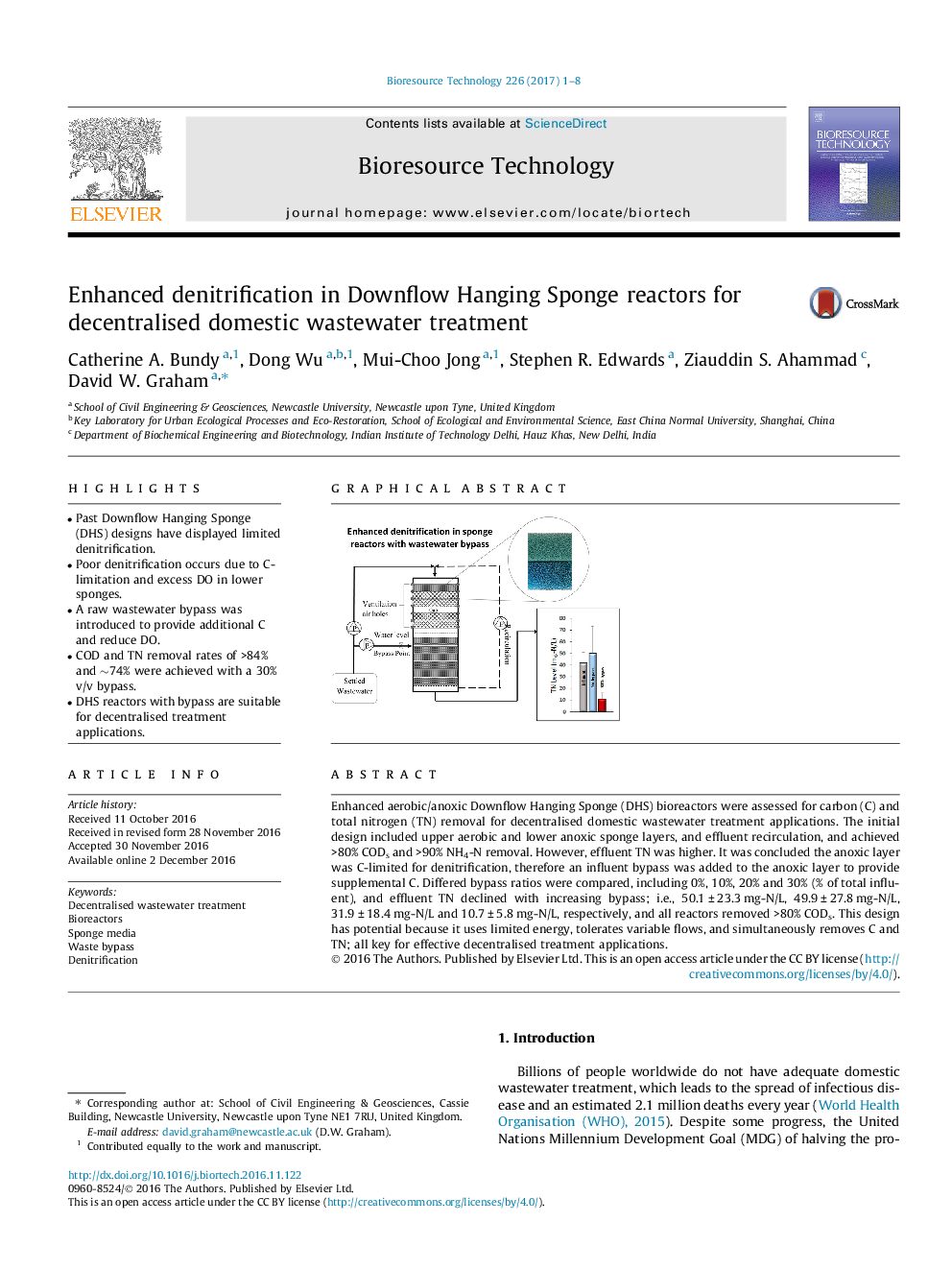| Article ID | Journal | Published Year | Pages | File Type |
|---|---|---|---|---|
| 4997629 | Bioresource Technology | 2017 | 8 Pages |
â¢Past Downflow Hanging Sponge (DHS) designs have displayed limited denitrification.â¢Poor denitrification occurs due to C-limitation and excess DO in lower sponges.â¢A raw wastewater bypass was introduced to provide additional C and reduce DO.â¢COD and TN removal rates of >84% and â¼74% were achieved with a 30% v/v bypass.â¢DHS reactors with bypass are suitable for decentralised treatment applications.
Enhanced aerobic/anoxic Downflow Hanging Sponge (DHS) bioreactors were assessed for carbon (C) and total nitrogen (TN) removal for decentralised domestic wastewater treatment applications. The initial design included upper aerobic and lower anoxic sponge layers, and effluent recirculation, and achieved >80% CODs and >90% NH4-N removal. However, effluent TN was higher. It was concluded the anoxic layer was C-limited for denitrification, therefore an influent bypass was added to the anoxic layer to provide supplemental C. Differed bypass ratios were compared, including 0%, 10%, 20% and 30% (% of total influent), and effluent TN declined with increasing bypass; i.e., 50.1 ± 23.3 mg-N/L, 49.9 ± 27.8 mg-N/L, 31.9 ± 18.4 mg-N/L and 10.7 ± 5.8 mg-N/L, respectively, and all reactors removed >80% CODs. This design has potential because it uses limited energy, tolerates variable flows, and simultaneously removes C and TN; all key for effective decentralised treatment applications.
Graphical abstractDownload high-res image (82KB)Download full-size image
